How to choose Flat Design visuals
When crafting a 2D Animation Flat Design Video, the selection of visuals goes beyond mere aesthetics; they must strategically serve the communication goals. Creators should consider how each visual element guides the viewer towards a desired action. Placing clear, action-oriented calls to action within the video proves far more effective than vague prompts. Instead of generic encouragement to 'learn more', they can opt for specific instructions like 'Start Your Free Trial' or 'Request a Demo', tailored to the viewer's likely place in their journey.
Measuring the impact of their 2D animation video involves tracking tangible outcomes. They might assess the video's contribution to increasing qualified leads, shortening the sales cycle by better informing prospects, or reducing support requests as users gain clarity from visual explanations. Incorporating real-world scenarios into product demonstrations makes the offering instantly more relatable. Showing how the product integrates seamlessly into existing workflows or directly addresses industry-specific pain points significantly increases its perceived value to the intended audience.
Analyzing viewer behavior offers invaluable insights into visual effectiveness. Utilizing tools that provide heatmaps or attention tracking reveals which parts of the video hold interest and which cause viewers to disengage. This granular data helps pinpoint confusing visuals or segments where the narrative might falter. Furthermore, weaving in social proof, such as brief appearances of well-known client logos or impactful user statistics, can swiftly build credibility and trust with new viewers considering a similar solution.
Optimizing visuals for different viewing platforms is another critical consideration. Videos intended for fast-scrolling social media feeds must instantly grab attention, often requiring them to be understandable even without sound through clear text overlays and dynamic visuals. These typically need to be shorter and highly impactful. Conversely, a video placed on a product page, where viewers have higher intent, can afford to be slightly longer and delve into more detail, allowing for a richer visual explanation of features and benefits within the flat design style.
- Conduct A/B testing on various visual elements, like thumbnail images or different visual representations of concepts, to discover what resonates most strongly with the target demographic and prompts desired actions.
- Ensure the visual pacing aligns with the voiceover and narrative flow, preventing visuals from becoming too busy or too slow, maintaining viewer engagement throughout.
- Select color palettes and visual motifs that not only align with brand identity but also emotionally connect with the intended audience, enhancing message reception.
- Maintain visual clarity and avoid clutter, upholding the core strengths of the flat design aesthetic while ensuring all on-screen information is easily digestible.
Ultimately, choosing effective flat design visuals is a strategic process centered on audience understanding, clear communication, and continuous performance analysis.
Understanding 2D Animation techniques
Grasping 2D animation techniques means focusing video application concrete results. Businesses leverage these visual tools achieving specific aims beyond simply creating animated content. They think strategically about viewer journey, ensuring video guides prospects toward desired actions. Measuring effectiveness becomes key demonstrating value investment.
Clear, specific calls to action prove vital video end. Generic prompts serve little purpose; action-oriented text connects viewers next steps. "Start Your Free Trial," "Request Demo," "Download Report" examples align video objective viewer progression. Measuring ROI involves tracking production costs against value generated. Increased qualified leads, reduced sales cycle length, decreased support ticket volume examples tangible value streams.
Using real-world scenarios shows product integration existing workflows, increasing perceived value. Demonstrating features relevant contexts makes product tours relatable believable. Analyzing viewer behavior heatmaps attention-tracking tools reveals watched, rewatched, skipped segments. Data points identify confusing sections spots interest drops, informing content refinement. Incorporating social proof quickly builds credibility trust. Brief well-known company logos or user statistic mentions effective.
Considering platform different viewing environments crucial optimization. Social media videos grab attention instantly, often understandable without sound using text overlays. A well-crafted 2D explainer video tailored platform thrives concise visual communication. Product page videos assume higher intent, allowing slightly longer more detailed presentations. A/B testing different video elements – thumbnail, initial content, CTA wording placement, script variations – yields significant audience resonance insights driving conversions. Conveying complex information dynamically often benefits from robust 2D motion graphics video capabilities, adapted for maximum impact platform. Applying these analytical refinement techniques enhances 2D animation video effectiveness significantly.
Selecting an effective color palette for animation
Achieving real impact with animation extends past initial design aesthetics. Once visuals complete, strategic steps maximize audience connection and drive measurable outcomes. Optimizing a flat design video involves careful planning for viewer response, ensuring creative effort translates into tangible gain. This requires focusing on how the video prompts action and contributes directly to business objectives like lead generation or efficiency gains.
Measuring video performance proves critical for demonstrating value. Track the return on investment, carefully comparing creation expenditure against value generated. This value includes tangible metrics such as increased qualified leads, reduced support inquiries from audiences better understanding product through clear visuals, or faster sales cycles due to better-informed prospects. Analyzing how viewers engage provides vital clues; utilize tools like heatmaps and attention tracking to reveal compelling sections or points viewers abandon content. Identifying these moments guides necessary content adjustments and future video planning.
Refining content based on data insights improves performance across platforms and audience segments. Incorporating social proof, such as well-known client logos or statistics about satisfied users, builds immediate credibility and trust with new viewers navigating information overload. Conducting A/B testing on various elements—like different thumbnail images, the initial seconds grabbing attention, the placement or wording within calls action, or even slight script variations—uncovers precisely what resonates most strongly with target audiences, driving higher engagement rates and conversions.
- Strategically design calls action with specific, action-oriented phrasing like "Start Your Free Trial" or "Request a Demo," guiding viewers toward desired outcomes aligned with their journey stage.
- Showcase products within relatable, real-world scenarios demonstrating seamless workflow integration into existing user tasks or industry contexts, increasing perceived utility.
- Utilize viewer behavior analytics tools pinpointing engaging or problematic video segments for refinement, revealing exactly which parts viewers watch, rewatch, or skip.
- Tailor video content for diverse platforms, adapting format, length, and style for optimal impact on social feeds where attention must be instant and potentially sound-off, versus detailed product pages allowing deeper dives.
Ultimately, mastering these post-production strategies ensures a flat design explainer video delivers significant value and achieves its communication goals across different distribution channels and viewer contexts.
Integrating typography in 2D animation
Within a flat animation video, typography serves not merely as text on screen but as a powerful narrative and persuasive tool. They find that thoughtful font selection sets the appropriate tone, guiding the viewer through the story while reinforcing brand identity. Strategic placement and animation of text can create a clear hierarchy, ensuring crucial information captures attention immediately, transforming passive viewing into an active comprehension experience. Beyond aesthetics, typography plays a vital role in viewer understanding.
Effective typography enhances understanding by embedding text directly within real-world scenarios depicted. Showing how a product works or integrates becomes clearer when on-screen text labels features or clarifies steps within a workflow demonstration. Analyzing how viewers interact with these textual elements provides invaluable data; heatmaps, for instance, can reveal if specific text calls to action or explanatory notes are being seen or ignored, highlighting areas for potential improvement in message delivery or visual hierarchy and ultimately informing the video's effectiveness.
They also recognize that typography is central to optimization and building credibility. Incorporating social proof, such as displaying usage statistics or well-known client logos, relies on clear, authoritative text presentation to immediately build trust. Conducting A/B testing on different typographic approaches – varying font styles for emphasis, adjusting text size in calls to action, or altering wording in explanations – offers data-driven insights into what resonates most with the target audience and drives desired outcomes. A successful 2D Animation Flat Design Video example often leverages typography across platforms, adapting text overlays for silent social media viewing or detailed explanations on landing pages, ensuring the message connects regardless of context and maximizing reach.
- They make calls to action unambiguous commands using action-oriented text like "Start Your Free Trial" or "Request a Demo", directly influencing conversion points.
- Viewer behavior tracking, such as analyzing which text prompts lead to clicks, directly informs optimization efforts to refine the video's persuasive elements.
- Displaying statistics or client names with strong typography builds immediate credibility and trust with the audience, acting as powerful social proof.
- Platform optimization involves ensuring text is legible and impactful across various screen sizes and viewing environments, including designs meant to be understood without sound, crucial for social media performance.
Ultimately, integrating typography strategically transforms a visually appealing animation into a highly functional communication asset, driving clearer understanding and measurable results. Strategic use of type elevates the entire viewing experience.
Object motion styles in 2D video
Moving elements deliberately within a 2D video transforms simple visuals into powerful communication tools. This strategic animation guides viewer focus and enhances comprehension, ensuring key messages land effectively. By showing products or services in action through animated real-world scenarios, they immediately appear more relatable and valuable to the audience, making complex ideas easy to grasp.
Ensuring viewers know what steps to take next is paramount. Instead of vague instructions, specific, action-oriented calls to action integrated with the animation provide clear direction. Phrases like "Request a Demo" or "Download the Report" are far more effective than generic prompts, directly encouraging the desired conversion based on the viewer's likely interest level after watching.
Evaluating the success of these videos requires looking beyond just view counts. Measuring the return on investment involves comparing the initial production costs against tangible outcomes. This could include tracking an increase in qualified leads generated, a reduction in customer support inquiries because the video explained features clearly, or a measurable impact on sales attributed to better-informed prospects guided by the animation.
Here is how strategic elements amplify impact:
- Analyzing how viewers interact with the moving elements reveals exactly which parts capture and hold attention, highlighting areas of strong interest or points where engagement drops.
- Incorporating social proof, perhaps showing recognizable brand logos using the product in a 2D motion graphics video example, quickly builds credibility and trust with potential customers.
- A/B testing different animated sequences or the placement and wording of calls to action allows creators to refine their approach based on audience response, maximizing conversion rates.
- Optimizing a flat design explainer video example for different platforms means adapting the animation style, pace, and length to suit how and where viewers are watching, ensuring maximum impact whether on a social feed or a dedicated landing page.
Designing background elements for clarity
When developing a flat design video example, think of it as more than just visuals; it's a tool for clear communication and action. Creators aim for impact, and true effectiveness comes from ensuring every design choice contributes to clarity and measurable outcomes. Moving beyond just the visual style, strategic elements must guide viewers and motivate desired responses.
Strategic design includes integrating clear calls to action. These crucial endpoints provide specific instructions, moving past generic prompts. Phrases like "Request a Demo" or "Download the Report" outperform a simple "Learn More," directly linking viewer action with the video's objectives and their stage in a potential journey. This intentional guidance enhances the video's practical value.
Measuring the effectiveness of such content involves tracking production costs against generated value. This tangible return on investment might appear as an increase in qualified leads or reduced support requests because viewers better grasp product features from the explanation. Understanding this ROI validates creative efforts and informs future projects.
- Incorporating real-world scenarios helps audiences see how a product fits their daily tasks, significantly boosting its perceived worth.
- Analyzing viewer behavior provides granular insights; heatmaps reveal exactly where engagement peaks or drops. This data identifies confusing segments needing refinement.
- Building trust is key. Incorporating social proof, like displaying recognizable client logos or user statistics within a flat animation video example, lends immediate credibility.
- Optimizing performance requires testing various elements, from initial thumbnails to the first seconds of content and the wording of the CTA. A/B testing different approaches highlights what truly resonates with the target audience and drives higher conversions across platforms.
Applying visual simplification principles
Simplifying visuals in 2D animation flat design videos strategically enhances their power to captivate and convert. They understand that deliberate design goes beyond looking clean; it directs viewer focus and facilitates understanding, directly impacting how well the video achieves its goals. This focus on clarity is essential for maximizing impact.
Applying these principles means calls to action become unmistakably clear. They replace vague prompts with action-oriented text like "Request a Demo" or "Start Your Free Trial," precisely aligned with the viewer's stage and the video's objective. Measuring success moves beyond simple view counts. They track tangible ROI by comparing production costs against value indicators, such as increased qualified leads or reductions in support inquiries stemming from prospect clarity. A high-performing 2D Animation Flat Design Video sample demonstrates complex ideas efficiently.
Using real-world scenarios simplified visuals makes product benefits immediately relatable, showing seamless integration into existing workflows and solving specific problems. Analyzing viewer behavior through tools providing granular data helps them refine content. Examining analytics from a 2D animation video sample can reveal viewer drop-off points. Incorporating social proof, perhaps brief mentions of satisfied users or recognized logos, builds credibility swiftly. They leverage A/B testing insights, refining thumbnails, initial content, and CTA wording to understand audience resonance and optimize for diverse platforms, adapting for viewer intent and viewing environment.
- Visual clarity ensures calls to action are highly visible and compelling.
- Tracking costs against value like reduced sales cycles measures true ROI effectively.
- Analyzing viewer interaction pinpoints areas needing visual or narrative adjustment.
- A/B testing elements provides data-driven direction for optimization.
Effective iconography usage
Building upon the foundation of visual simplicity and efficiency, effective iconography elevates flat design animation further. Icons serve as powerful visual shortcuts, instantly communicating ideas and guiding viewers through information. This visual clarity is not just aesthetic; it is a critical tool for achieving tangible results.
Designers leverage thoughtful iconography to enhance the user journey within a video. For instance, incorporating clear, action-oriented icons within a 2D explainer video sample makes calls to action immediately recognizable, prompting viewers toward desired next steps like signing up or downloading. Icons within product tour segments simplify complex features, making the product's value proposition easily digestible by visually representing functionalities.
Beyond direct instruction, icons contribute significantly to analysis and optimization. Marketers examining viewer behavior often rely on visual tools, such as heatmaps that use icons or color gradients to show areas of interest. Icons within analytics dashboards help to quickly interpret performance data. Measuring ROI becomes more intuitive when icons support the visual representation of key metrics and growth. Incorporating social proof elements like recognizable brand logos or trust badges, often represented by simple icons, builds credibility with the audience swiftly. Furthermore, A/B testing various visual elements, including the design or placement of icons, provides data-driven insights into what resonates most effectively with the target audience and drives conversions.
- Icons simplify complex processes, transforming abstract steps into easily understood visual flows critical in a 2D motion graphics video sample.
- Animated icons provide engaging feedback and effectively direct the viewer's gaze to important on-screen elements.
- Ensuring icons remain crisp and clear across diverse platforms, from mobile screens to desktops, is vital for consistent communication.
- Maintaining a consistent style for all icons reinforces brand identity and recognition throughout the video and beyond.
Through deliberate and effective iconography, flat design animation not only simplifies information but actively contributes to viewer engagement, comprehension, and ultimately, achieving specific marketing objectives.
Applying distinct illustration styles
Building on the foundation of clear and visually effective communication, the true power of this animation style emerges in its strategic application. Simply creating a visually appealing video is only the first step; maximizing its impact requires careful consideration of viewer engagement and conversion goals. They must ensure the animation not only informs but also motivates specific actions from the audience. This involves weaving distinct illustration styles into a framework designed for measurable results.
Ending a video effectively means guiding the viewer to the next step. Instead of vague suggestions, employ clear and specific calls to action. These prompts should be action-oriented, relevant to the viewer's stage, perhaps inviting them to "Start Your Free Trial" or "Download the Report." Measuring the return on investment involves tracking production costs against tangible value, such as increased qualified leads or a shorter sales cycle because prospects are better informed. Analyzing viewer behavior, perhaps through heatmaps, reveals which parts resonate or cause drop-off, providing invaluable data for refinement.
Incorporating social proof, like featuring recognizable logos or user statistics, builds credibility swiftly. To truly understand what connects with the intended audience and drives higher conversions, teams often utilize A/B testing on various elements, from the initial thumbnail to the wording on a call to action or even subtle script changes. Optimizing for diverse platforms demands adapting content length and style; social feeds favor brevity and sound-off viewing, while product pages allow for more detailed explanations assuming higher viewer intent. Examining a flat design explainer video sample showcases how these strategic layers are integrated. Each flat design video sample reviewed can offer insights into different approaches to achieving these objectives. Applying these strategic considerations ensures that distinct illustration styles contribute directly to achieving desired outcomes.
- Using clear, specific calls to action is paramount for guiding viewers.
- Measuring ROI links production costs to tangible business value like lead generation.
- Analyzing viewer behavior provides data to optimize video performance.
- Incorporating social proof rapidly builds trust and credibility.
- A/B testing video elements refines content for maximum audience resonance and conversion.









